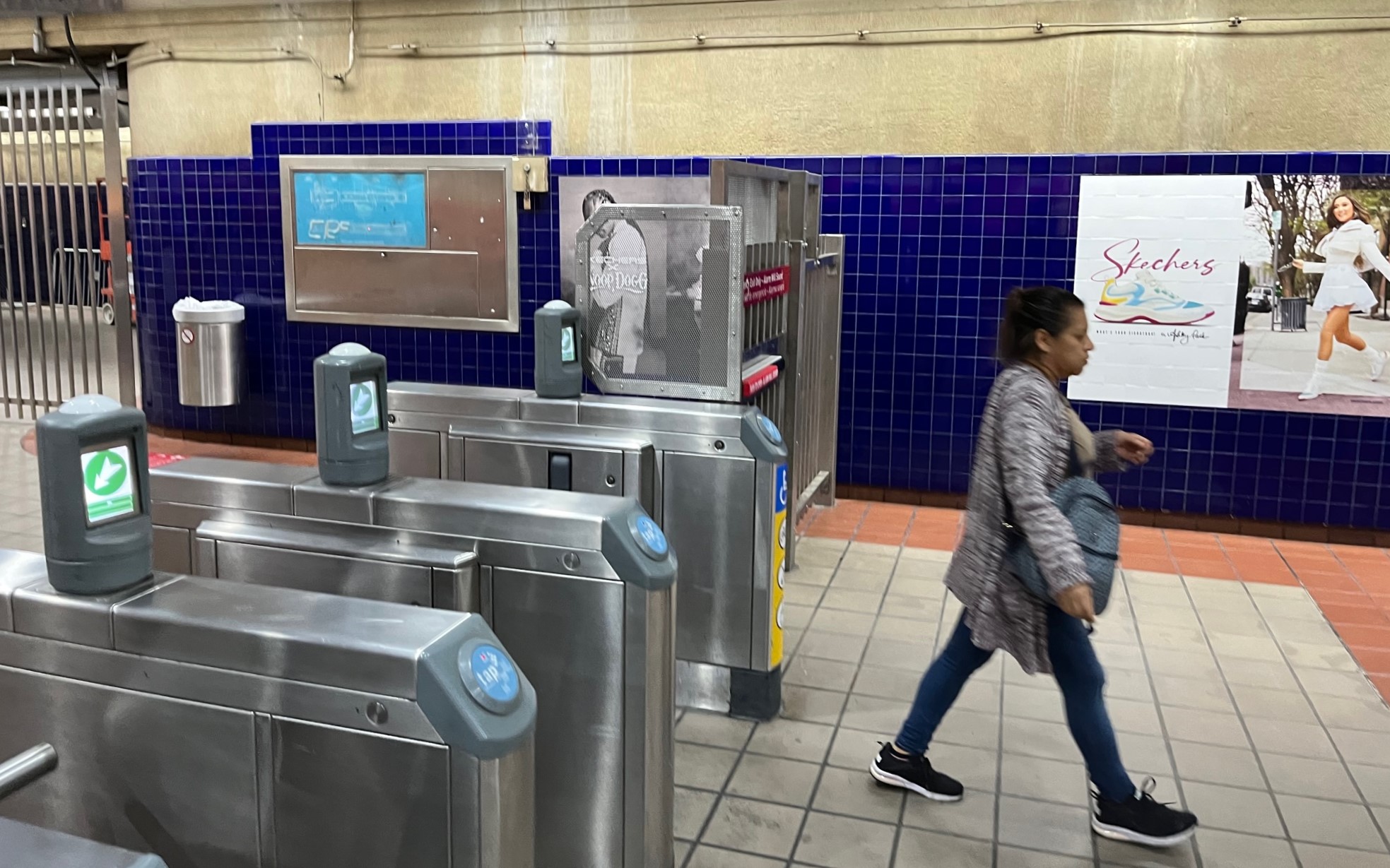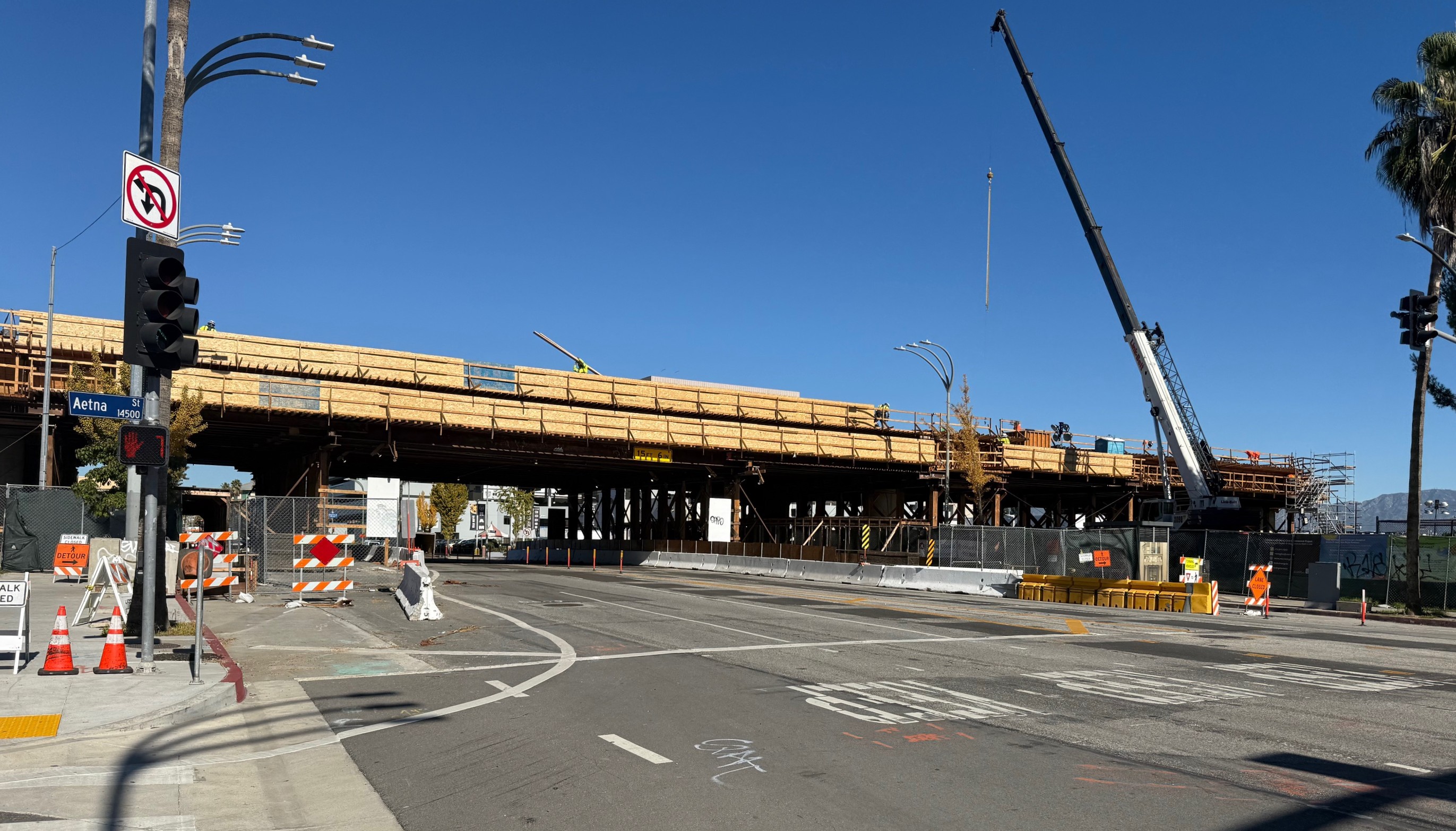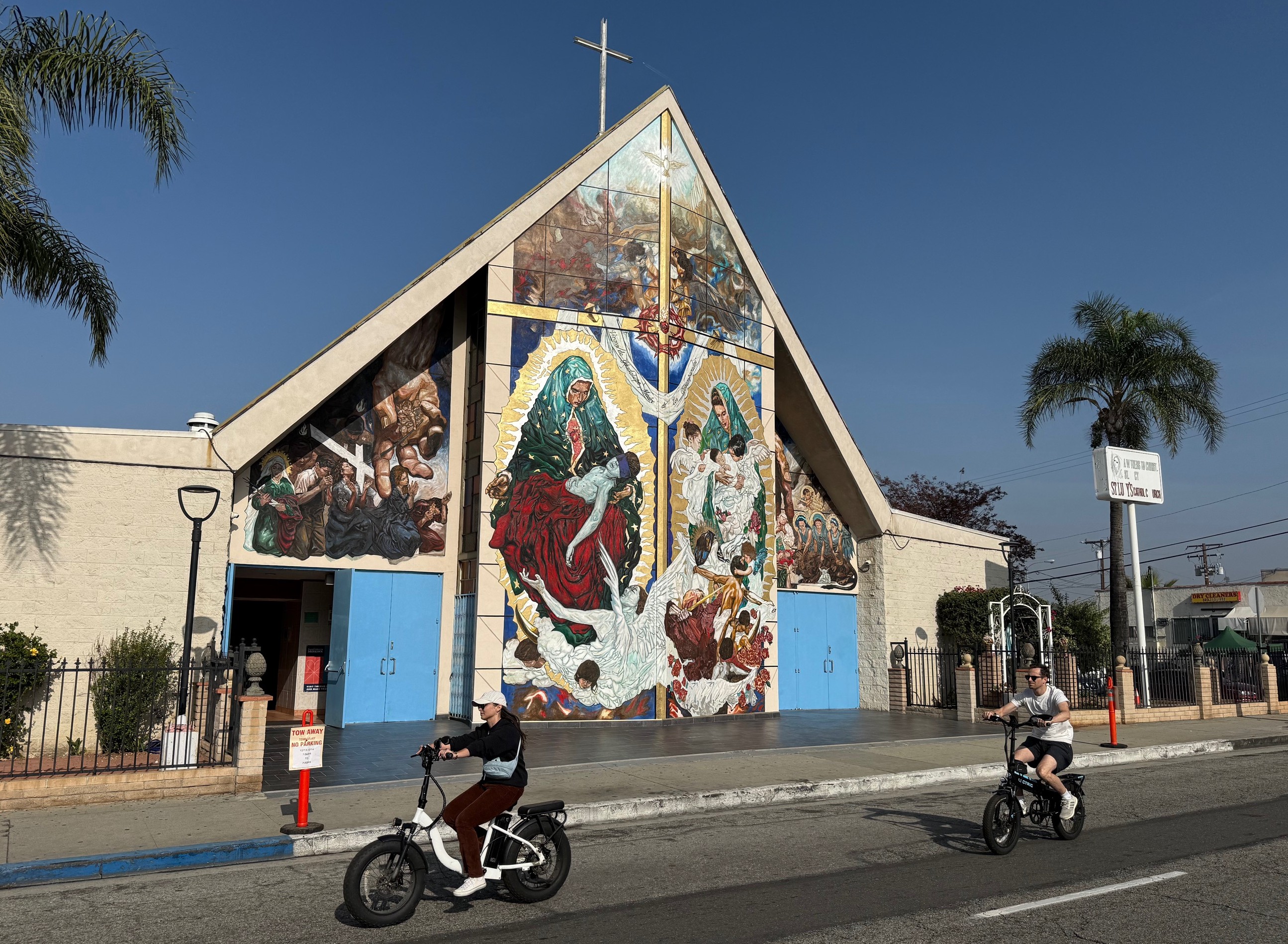
Since February Metro has been piloting a security blitz at its heavily used MacArthur Park subway station. In the past month, the agency hardened its turnstile gates, with the unintended consequence of delaying some paying riders.
At Westlake/MacArthur Park Station Metro is seeking to curb inappropriate activity, including crime. Metro's pilot has largely focused on punitive measures: headache-inducing loud classical music, closing an entrance and much of the plaza, uncomfortably bright lighting, an increased police presence, barricades funneling pedestrians, and more. Additional measures are on the way, including baffles to make station seating areas uncomfortable.
The pilot includes some positive measures: an increase in transit ambassadors and cleaning, and a recurring health clinic. Metro also recently did what was probably most needed: increased service on the entire B and D Lines. Some additional positive measures are planned, including: expanding informal street vending formally into Metro's plaza (Metro is awarding itself a grant to help pay for this; no grants were needed for the punitive measures), possibly adding bathrooms, and someday building out long-delayed affordable transit-oriented housing.
During her presentation at last week's Metro board Operations Committee, Metro Chief Safety Officer Gina Osborn praised Metro's latest feature designed to block "non-destination travelers": "fortified turnstiles" at the MacArthur Park Station.
The description is a bit misleading. Metro has not actually fortified turnstiles but added metal grates to prevent most people from reaching around to open the emergency swing gate doors right next to the turnstiles.
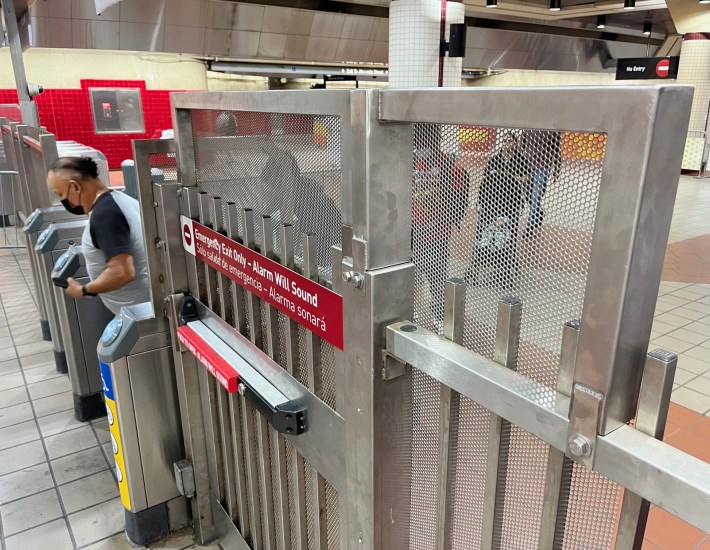
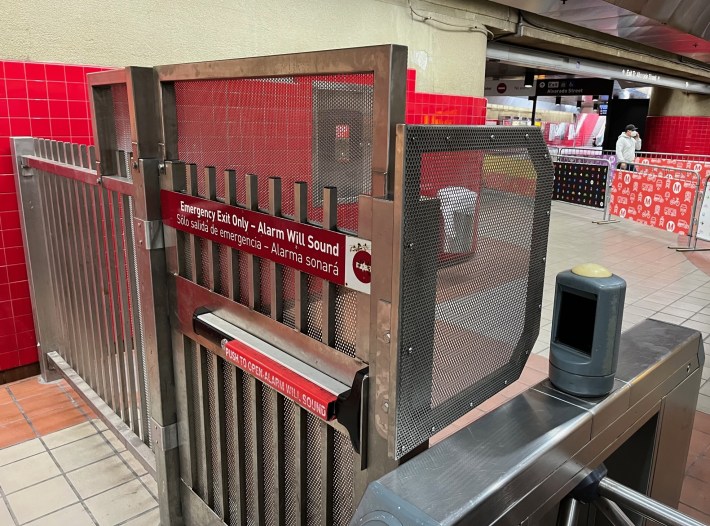
This gate hardening mostly just ensures more determined fare evaders are channeled into entering the system via the turnstiles themselves. (This "jumping the turnstiles" practice is has long been a fairly common fare evasion trick at Metro stations and nearly anywhere turnstiles are used.) Metro's wide entry turnstile - commonly used for strollers, wheelchairs, and bicycles - has always provided the path of least resistance, as it is fairly easy to step over/through the narrow gap in the gate arms - though sometimes this damages the entry mechanism.
When Streetsblog visited MacArthur Park last week, the wide turnstile entry was damaged, and a woman who had paid via TAP card had to get the attention of other riders to open the emergency gate so she could enter the system with her stroller. She and the infant got through, but Metro's turnstile fortification delayed them for around a minute.
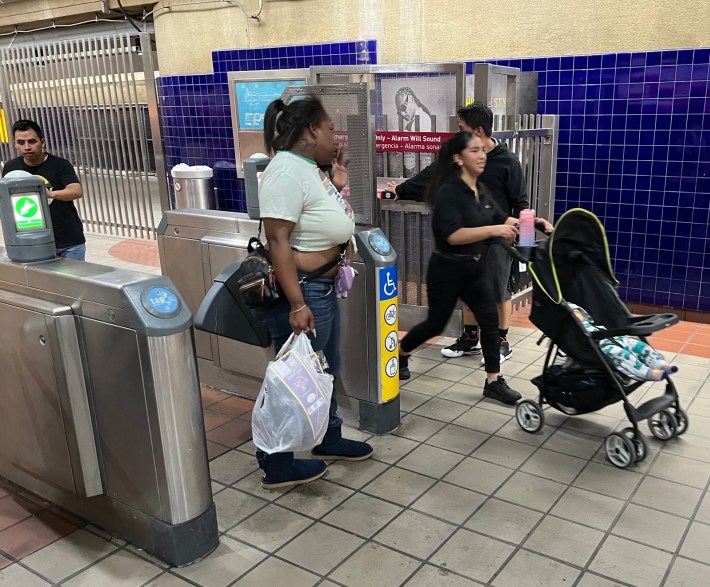
Hopefully Metro is monitoring the effectiveness of these fare gate modifications - both in (hardly) keeping out fare-evading riders and in (inadvertently) blocking paying riders.
Metro notes that its MacArthur Park Station pilot interventions have led to some reduction in unwanted activity at the station, but at what cost? Metro has mainly been making the MacArthur Park Station an awful place for everyday use. If this wasn't bad enough for riders living and working in that community, Metro leaders have hinted at expanding their awful MacArthur Park pilot features to other stations.
As the area's City Councilmember Eunisses Hernandez has noted, the punitive aspects of the MacArthur Park pilot "shuffle people from one place to another without resolving their needs." Hernandez is calling for saturating the MacArthur Park area with services.
Transit advocates, including the Alliance for Community Transit, have called for activating stations. Metro, especially with this pilot, seems mostly focused on the opposite: making stations less welcoming and more desolate.
